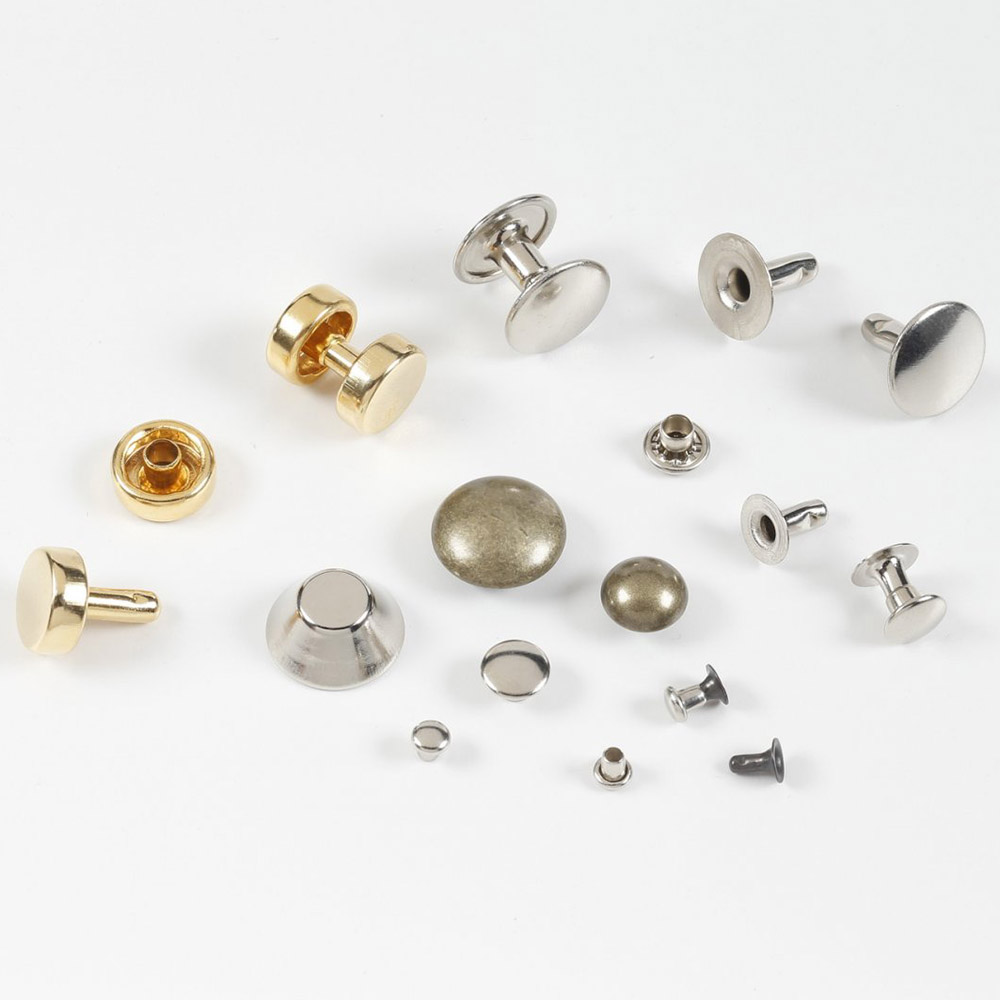Rivets
"Putting studs / rivets in a leather belt is a technique used to add extra decoration or strength to the belt.
Studs are small metal rings or spikes that can be attached to leather using a fastening template. Once in place, they can be used to create a unique and personal look on the belt, or they can be used to reinforce the belt to withstand harder use.
There are many different ways to put studs in a leather belt. A common method is to make a small hole in the leather where the stud is to be placed, and then pull the stud through the hole and fasten it on the back of the leather.
Putting studs in a leather belt can require a certain degree of experience and skill, as it is important to get the studs to sit correctly so that they don't fall off or damage the leather. If you don't have the experience or ability to do this, you may want to consider taking the belt to a professional at LeatherHouse.



Rivets are small metal fasteners that are used to hold two or more pieces of material together. They are made of a hard, durable metal such as steel or aluminum, and have a simple, cylindrical shape with a flat head on one end. To use a rivet, a hole is first drilled through the pieces of material that need to be joined. The rivet is then placed through the hole, and the end with the flat head is squeezed or pounded down so that it is flush with the material. This creates a secure mechanical bond that holds the materials together. Rivets are commonly used in construction, manufacturing, and other industries where strong, permanent joints are needed. They are also used in some types of clothing and accessories, such as jeans and belts, to add a decorative or functional touch.
Rivets may seem like simple, everyday fasteners, but they have a fascinating history and have played a crucial role in many important technological advancements.
Did you know that the ancient Egyptians used rivets to construct their pyramids? These early rivets were made of wood and were used to hold large stone blocks together. Over time, rivets have evolved and are now made of a variety of materials, including metal, plastic, and composite materials.
One of the most impressive uses of rivets can be found in the construction of modern skyscrapers. These towering structures rely on the strength and durability of rivets to hold together the steel beams that make up their frameworks. In fact, the world's tallest building, the Burj Khalifa in Dubai, contains over 300,000 metric tons of steel, much of which is held together by rivets.
Rivets may be small, but they have the power to bring big ideas to life. From ancient pyramids to modern megacities, rivets have played a crucial role in shaping the world as we know it.







